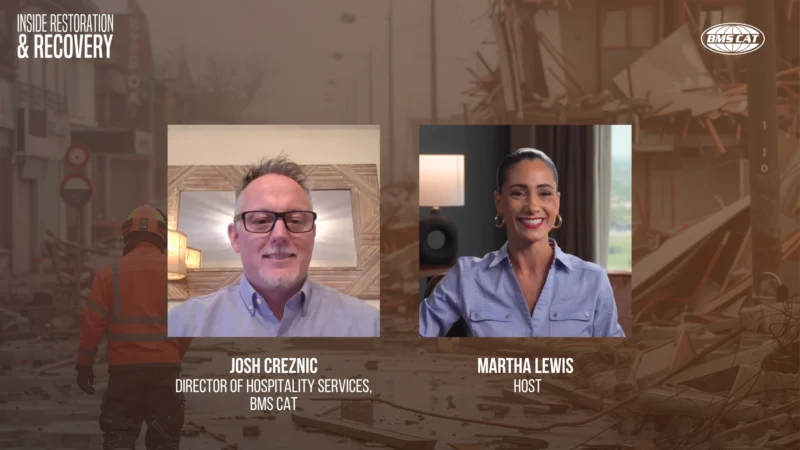U.S. and E.U. Hospitality Will Reap Rewards from Dollar-Euro Parity
As U.S. inflation is raising prices for producers and consumers, other currency instability is actually giving the dollar back some of its strength on a global playing field. The value of the euro has been weakening all year, reaching its “lowest level since 2002, its value relative to the dollar down 15% over the last year” in mid-July, according to the Wall Street Journal. Since July 14, the value of euro has had a slight recovery, fluctuating around $1.02 USD. Almost equalizing the values of two of the world’s leading currencies, this close-to parity is creating a unique opportunity for the U.S. hospitality industry as tourists clamor for a vacation in Europe.
The beneficiaries for the current currency exchange, according to James Ferrara, president of leading travel advisory company InteleTravel, include U.S. tourists who can use this parity to their advantage, but “the real winner” is going to be U.S. hospitality companies that can capitalize on international travel fervor. Ferrara said the ones with the most opportunity are “the U.S. package and tour companies and wholesalers.”
“Their rates that are facing consumers were built on dollars, so there’s no real effect to what consumers are paying for vacations that were booked months ago,” Ferrara said. “But the same wholesaler or tour packagers’ contracts with their providers in Europe are at least, to some extent, based in euros. So while they may be selling a vacation here in the U.S. for $2,000, they might be paying less for that vacation to their European provider because of the currency dynamics.”
Booking behavior reports have signaled increased interest in overseas vacations, supported by a now more powerful dollar in often-pricier European countries. However, Ferrara explains that this is mostly an impression-led trend rather than one based in budgetary reality; while the immediate value of spending dollars in Europe brings a 10% savings from the same time last year, much of this buying power has been negated by record domestic inflation.
Regardless, U.S. tourists are eyeing a European vacation while this parity lasts. Though more American tourists spreading their valuable discretionary income across the globe is an exciting prospect for countries on the receiving end, a weaker euro could have the opposite effect on European tourists.
“Now, with the dollar being stronger, I have a feeling that it’s going to leave a lot of Europeans questioning whether they are going to continue to maybe have their travel plans in the U.S. this summer,” said Sarah Dandashy, hospitality expert, Amazon best-selling author and host of Say Yes to Travel.
European hospitality professionals and companies, however, will benefit from an influx of eager U.S. tourists, and they’re in need of mass consumer spending to stimulate the economy. With war in Russia, Europe’s financial stability has been more affected due to the region’s reliance on Russia for oil and natural gas; energy and consequently many other goods’ prices have been rising in preparation for a full EU ban on Russian oil imports by the end of the year.
An influx of tourism could help put money in European businesses’ pockets and could lower prices via increased consumer demand, as long as EU hospitality companies don’t jack up prices further in anticipation of American tourists. But with the instability of current European air travel, U.S. travels eyeing a European summer vacation could be getting mixed messages with pricy airline tickets and labor disputes.
“Flights have been challenging to say the least. Are bags going to get to the destination, what are airports going to be like. But despite these high prices as far as getting to Europe, it certainly is more attractive to then be in Europe,” Dandashy said.
So, is the dollar and euro’s nearly 1:1 ratio enough incentive for Americans to travel overseas, despite challenges with European airports like possible luggage loss, delayed or cancelled flights, high airfare, and very long customer service lines?
James Larounis, travel industry analyst for travel and credit card offer advisory company Upgraded Points, believes so.
“We’ve got folks that are gonna want to continue travel. I don’t think these issues at European airports are going to want to stop people. There are ways to mitigate those issues and kind of be smarter about traveling instead of having to deal with the aftereffects once something happens,” Larounis said.
U.S. tourists seem to be taking full advantage of the euro’s dipping value; Reuters reporting cites UBS analysis that tourism spend in Europe went up 400% in June year-over-year, as well as anecdotal interviews with U.S. tourists who claim luxury spending in countries like France is like “it’s on sale.”
“We’ve got such pent up demand. People have saved their frequent flyer miles, their savings, stimulus money,” Larounis said. “People want to get back out to traveling especially Europe because of the drop in testing requirements.”
“What we see is rising bookings in Europe and overseas, especially since this parity situation with the currency, and we don’t see customers either in the U.S. or in Europe pulling back,” Ferrara said. “They’re incredibly resilient, coming out of the pandemic, they want to travel, and it seems that nothing is gonna stop them. There’s a tremendous amount of momentum and demand here and I think that will be more of a consideration for travelers than the friction.”
Additional writing by Gabrielle Bar.








